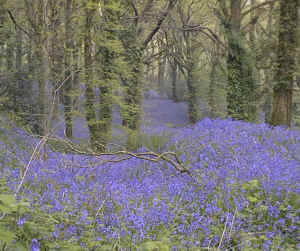|
| |
Ancient Woodlands -
Continued
Previous
Ancient woodlands may be separated according to whether the
trees have developed naturally
throughout the wood's recorded history, or whether they have been replanted at any
stage.
Types of
Ancient Woodland
Ancient woodland is commonly divided into:
- Ancient semi-natural woodland (ASNW).
This is apparently of natural origin, rather than artificially planted. This does not
imply that the wood has remained untouched by human hand. In all probability it
will have been managed over the centuries by coppicing and may even have been clear-felled
at certain times. In this case, it is assumed that the woodland has been restored by
natural regeneration. These woodlands have never been cleared for some other use and the
complex woodland ecosystem developed over hundreds of years remains more or less intact.
- Ancient replanted woodland. Although continuously
wooded, these areas have had the original tree cover replaced with newer plantings,
usually within the last century and often with conifers. While woodlands of this type may
have suffered a much greater level of disturbance than ASNW, they will still retain many
of the plant species characteristic of ancient woodlands, even if only dormant in the seed
bank in the soil.
 |
Note the uniform age of
the trees and their layout in rows.
This indicates a planted woodland, while the Bluebells are an
ancient woodland indicator species . |
Ancient woodlands now account for less than 20% of
Britain's wooded areas. Many of the ancient woods which still survive are small, with most
being less than 20 hectares in area.
 |
Determining whether a wood is ancient or not requires a
variety of detective work, from searching through historical documents and records, to
careful observation of the woodland itself for landscape features and for Ancient Woodland
Indicator Species. |
|
Continue to Ancient Woodland
Indicator Species
|

